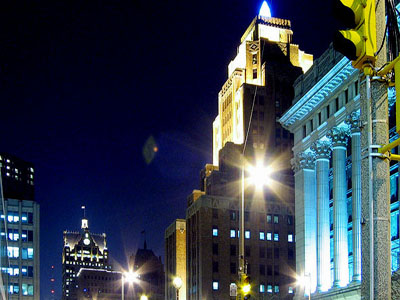"Milwaukee
Population in 2000: 596,974
Population in 2010: 594,833
Decline: 0.4%
 |
| Despite a smaller population, the typical denizen is younger. Photo: Beige Alert |
Milwaukee's been losing population since the 1960s, but the release valve's shutting quickly as the losses trickle to less than a percent -- the best population news Milwaukee's received since the city grew 16.3% during the 1950s -- and the city gets younger.
You don't have to set foot in the Santiago Calatrava-designed Quadracci Pavilion at the Milwaukee Art Museum, place a complicated order at Alterra Coffee, buy rounds of organic and gluten-free beer at Lakefront Brewery or see the city's starring role in Bridesmaids to realize that Milwaukee's changed quite a bit in the past decade. Those may, however, be some of the best indications of the city's youth movement that dropped the median age from 30.6 in 2000 to 30.3 last year, well below the nation's average age of 36.8.
As a result, the town once known for dying breweries and Happy Days reruns is ending up in some fairly enviable places, including the Daily Beast's list of the Best 50 Cities For Love and No. 9 on Forbes' list of Best Cities for Singles. A city rivaled only by Las Vegas for most bars, clubs and restaurants per capita, Milwaukee's GDP has grown enough to keep the taps flowing with a boost from $78.9 billion in 2006 to roughly $83 billion today behind growing companies such as Manpower and a reduced dependency on traditional employers such as MolsonCoors' Miller.
Though the Brewers aren't blowing the retractable roof off Miller Park and the Bucks have teams fearing the deer a little less in recent seasons, a Super Bowl win by a certain team in the suburbs is enough to give local fans something to cheer about. With all the museums, galleries, music venues and watering holes to visit, however, it's tough to fit the local teams into the schedule."
No comments:
Post a Comment